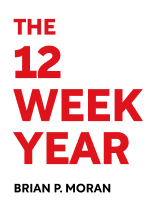

This article is an excerpt from the Shortform book guide to "The 12 Week Year" by Brian P. Moran. Shortform has the world's best summaries and analyses of books you should be reading.
Like this article? Sign up for a free trial here .
Why is it important to track your progress? How does the simple act of tracking your performance over time help you move closer towards your goals?
If you don’t track your progress, you can’t know whether you’re doing what is necessary to achieve your goals. Plus, tracking your progress gives you a sense of accomplishment, which boosts motivation and willpower.
Here is how to track your progress using two different measures: lag and lead indicators.
How to Track Your Progress: Lag vs Lead Indicators
To effectively track your progress, use two different measures: lag indicators and lead indicators. Lag indicators measure results, such as dollars earned, pounds shed, sales made, and pages written. Lead indicators measure the steps taken to achieve those results, such as marketing tactics, exercise routine, number of sales calls, and hours spent writing. You need to balance your focus between each type of indicator to gain an accurate measure of success.
If you are like most people, you’ve probably tried to track your progress by measuring your lag indicators. It’s human nature to measure how well you’re meeting your desired goals. Whereas you do want to track your overall progress, you will grow more when you focus your measurements on your lead indicators.
Measure your lead indicators each week by calculating the percentage of tasks completed. Divide the number of tasks completed with the number intended to get the resulting percentage of success.
- For instance, if you were supposed to complete two tasks a day during the five-day workweek, you should have 10 tasks completed by the end of the week. If you only did three, your operational percentage would be 30%.
View Your Scores As Feedback
You don’t have to strive for perfection in your execution. If you execute 85% of the time, you’ll still be on track to achieve the outcomes you want. Even if you only execute 65% of the time, you can still succeed if you stick to the plan and commit to executing a little more every day. But you must know how effective or ineffective your current execution is before you can adjust your plan of attack.
The more you perform these measures, the faster you’ll be able to judge your progress and make the necessary adjustments. Keep the measures for results and execution separate. You may not have lost any weight during one week, but if you succeeded in completing 100% of your tasks, you’re still making progress. When you’re deeper into your long-term plan and notice you still aren’t losing enough weight to make your goal, you may need to adjust your plan. But you won’t know where the problem lies if you don’t execute faithfully.
It won’t be easy to adjust your thinking to view execution as a measure of success instead of results. But your future is created by what you do today. If you want to know where you’re going, you have to be able to see where your actions are leading you.

———End of Preview———
Like what you just read? Read the rest of the world's best book summary and analysis of Brian P. Moran's "The 12 Week Year" at Shortform .
Here's what you'll find in our full The 12 Week Year summary :
- How to create a structured plan to rapidly accomplish goals
- Why annual goals don't work
- How to create urgency by working in 12-week increments






